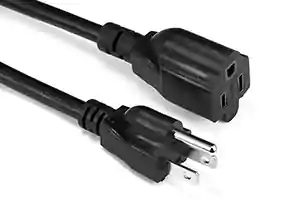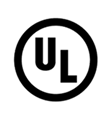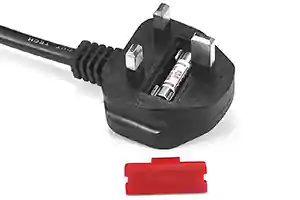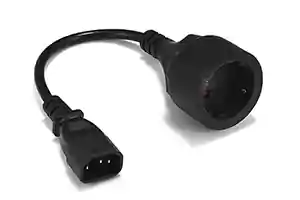The Type A plug (or flat blade attachment plug) is an ungrounded plug with two flat parallel pins. Although the American and Japanese plugs appear identical, the neutral pin on the American plug is wider than the live pin, whereas on the Japanese plug both pins are the same size. As a result, Japanese plugs can be used in the US but often not the other way around.
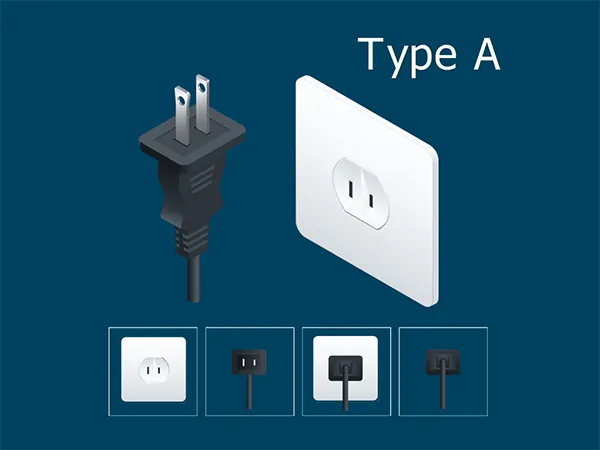
Wat is Italiaanse Type L stekker en stopcontact?
What is Type A plug?
This class II ungrounded plug with two flat parallel prongs is pretty much standard in most of North and Central America. It is known as NEMA 1-15 and was invented in 1904 by Harvey Hubbell II. The plug has two flat 1.5 mm dikke messen, en 15.9 – 18.3 mm in length and spaced 12.7 en.
Type A plugs are generally polarised and can only be inserted one way because the two blades do not have the same width. The blade connected to neutral is 7.9 mm wide and the hot blade is 6.3 mm wide. This plug is rated at 15 EEN. Sinds 1965, ungrounded type A outlets are not permitted anymore in new constructions in the United States and Canada, but they can still be found in older buildings.

Type A and B plugs have two flat prongs with (often, but not always) a hole near the tip. These holes aren’t there without a reason.
If you were to take apart a type A or type B socket and look at the contact wipers that the prongs slide into, you would find that in some cases they have bumps on them. These bumps fit into the holes so that the outlet can grip the plug’s prongs more firmly. This prevents the plug from slipping out of the socket due to the weight of the plug and cord. It also improves the contact between the plug and the outlet. Some sockets, however, do not have those bumps but just two spring-action blades that grip the sides of the plug pin, in which case the holes are not necessary.
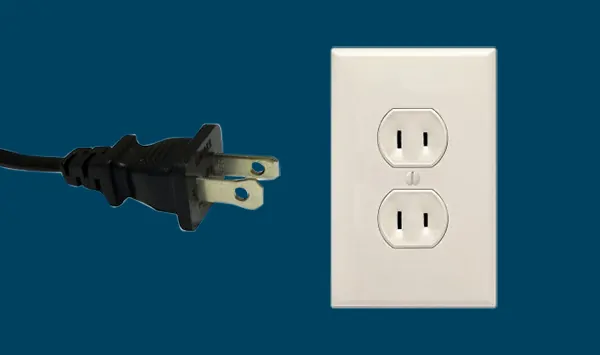
There are also some special outlets which allow you to lock the cord into the socket, by putting rods through the holes. In this way, vending machines and the like cannot be unplugged. Moreover, electrical devices can be factory-sealed by the manufacturer using a plastic tie or a small padlock through one or both of the plug prong holes. Bijvoorbeeld, a manufacturer might apply a plastic band through the hole and attach it to a tag that says: “You must do X or Y before plugging in this device”. The user cannot plug in the device without removing the tag, so the user is sure to see the tag.
What countries use Type A plug?
Countries using type A electric plug:
Amerikaans Samoa
Anguilla
Antigua en Barbuda
Aruba
Bahamas
Belize
Bermuda
Bolivia
Britse Maagdeneilanden
Cambodia
Canada
Kaaimaneilanden
China
Colombia
Costa Rica
Cuba
Dominican Republic
Ecuador
El Salvador
Guam
Guatemala
Guyana
Haïti
Honduras
Jamaica
Japan
Korea, Democratic Peoples Republic of
Democratische Volksrepubliek Laos
Libanon
Liberia
Malaysia
Mexico
Micronesië, Federale Staten van
Montserrat
Nederlandse Antillen
Nicaragua
Palau
Panama
Peru
Filippijnen
Puerto Rico
Republiek Niger
Saint Kitts en Nevis
Saint Vincent and the Grenadines
Taiwan
Thailand
Trinidad en Tobago
Turks- en Caicoseilanden
Verenigde Staten
Maagdeneilanden van de Verenigde Staten
Venezuela
Viet Nam
Yemen
Does China use Type A plug?
For China there are three associated plug types, types A, C, and I. Plug type A is the plug which has two flat parallel pins, plug type C is the plug which has two round pins, and plug type I is the plug which has three flat pins in a triangular pattern. China operates on a 220V supply voltage and 50Hz.
Nu is het uw beurt
So that’s how I understand Type A plug and socket.
Nu wil ik het aan jou overdragen: Via mijn artikel, do you understand What is Type A Plug and Socket (Wat is Italiaanse Type L stekker en stopcontact?)?
Do you have a different point of view with the power plug type A? Of andere vragen?
Laat het me weten door nu een snelle reactie hieronder achter te laten.
